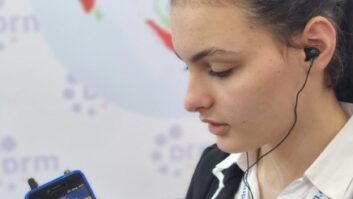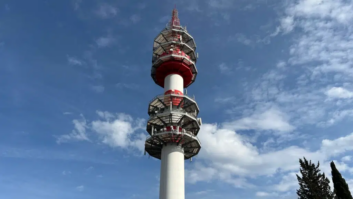GUEST COMMENTARY

Alan Hughes PERTH, Australia — Conversion to digital radio has been slow because there are four digital radio standards and also due to the high price of digital receivers when compared to traditional AM and FM radio sets.
As a result, telcos are trying to take over program distribution at an increased cost to broadcasters. Now there are single-chip receivers, which are able to receive all radio standards and — being a single IC — reduce receiver cost.
DAB+ and DRM digital radio standards can be used to broadcast local, regional, worldwide and community radio stations. Both standards can also be used in regions with low to high population density.
Frontier Silicon’s Chorus 4 and NXP’s SAF356X single-chip receivers can now receive DAB, DAB+, DRM, HD Radio, FM and AM in long-, medium- and shortwave. This opens the way for DAB, AM and FM including HD Radio to convert to DAB+/DRM, in what could be described as efficient digital broadcasting. In addition, Siano’s SMS4470 can receive digital TV outside North America as well as DAB+, DRM+ and FM.
DAB+, DRM
DAB is used in the United Kingdom and a few other European countries. DAB+ has more reliable reception and the ability to carry more audio programs and it works well for areas of high population density.
In many countries 47–68 MHz was used for analog TV and is now vacant, leaving a spectrum where there is no interference to other existing broadcasters. This allows high power to be used for regional services and low power for community broadcasting. Two DRM channels will fit into an FM channel, so if FM is switched off, an additional 202 DRM channels become available.
Low-powered on-channel repeaters can be used to fill in areas of poor reception in the license area but to do this with FM, another channel is required. In these frequency bands, DRM has much higher data rate, allowing for surround sound, and the faster display of image slide shows, and more detailed live traffic data than on other DRM modes.
On the high-frequency or shortwave band, programs can broadcast in stereo, and be free of the usual noises and distortion if enough power is used. DRM is easier to use than AM shortwave radio, because you do not have to remember frequencies, only the name of the broadcaster. More international high-frequency broadcasters should bypass the Internet, because of censorship and cost.
Regardless of the band, DRM is ideal for single broadcasters who will not have to share transmission facilities and can therefore be closer to their audience if they wish. In cases of emergency, the Emergency Warning Feature will retune a receiver to the transmitter, carrying the warning announcement. Maps and text can also be included in the EWF, which even switches on a receiver in standby mode.
For areas of low population density it is best for broadcasters to use either the 25.67–26.1 MHz band (with the signal radiated upwards to shower down over the surrounding area), or the 2.3–2.495 MHz band. The other bands above can give worldwide coverage except the AM band below 2 MHz.
RECEIVERS
India will have covered a majority of its population with DRM30 by the end of this year and proposes to switch off AM radio by 2017. Therefore, a range of radios will be available in large quantities soon.
Now that a single-chip all-digital and analog format radio integrated circuit is available, the way is clear for a worldwide conversion to digital-only radio is available. This can emulate the shutdown of analog TV and as soon as possible, elect an analog radio switch-off date.
In five years therefore all new car radios, mobile phones, tablets and home theater amplifiers must be able to receive all current digital radio signals. This includes all factory-installed radios in new cars. As soon as possible all broadcasters are to transmit the alternate frequency signal table. The presence of an alternate frequency for the broadcaster’s program being listened to will cause the receiver to switch to that program on DAB+ or DRM unless the reception is unreliable. The AFS frequency table is carried by RDS on FM and AMSS on AM.
Since listener numbers would be low initially, the new DRM/DAB+ channels should not be required to pay license fees until an AM/FM switch-off date occurs. This would compensate all broadcasters for having to simulcast to an initially small audience.
All broadcasters in a given license area should have the same DRM/DAB+ channel width and the same transmission power and antenna height, so they can choose their program format (music or speech), and data services such as Journaline (a text service), the weather, pictures to go with advertising, captioning for the hard-of-hearing as well as extensive road traffic data.
The adoption of DRM/DAB+ in the manner described above would allow broadcasters to control their transmission costs rather than letting the telcos do it for them.
Alan Hughes is a technical author and broadcasting industry consultant. Contact him at: [email protected].
Information on the DRM standard can be found here.
Information on the DAB+ standard is available here.
Radio World welcomes other points of view. Please send comments to [email protected].












